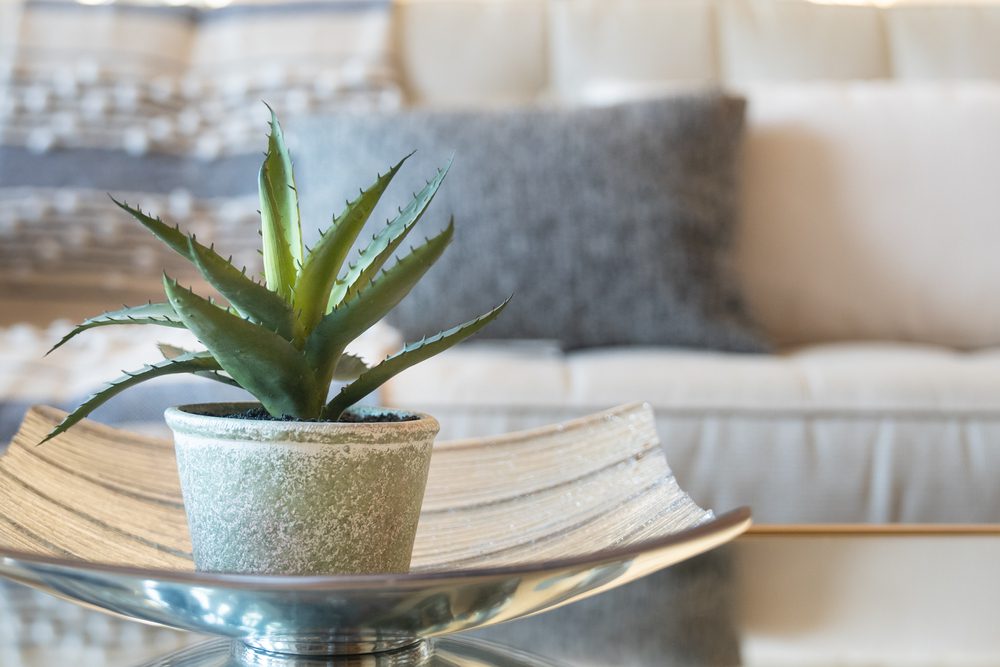
Aloe
Toxic Properties: Saponins and anthraquinones
Symptoms Include: Lack of appetite, vomiting, depression, diarrhea, and change in the color of urine.
Aloe is one of the most common indoor plants we see in many people’s homes. That’s probably because it’s so effortless to care for and has many medicinal properties. It’s such a beloved plant that you’ll likely see it outdoors in people’s gardens as well.
But sadly, the gooey gel, known for its soothing miracles, has two components that make this plant poisonous to dogs when ingested. Your pooch can’t tell you it’s feeling a bit off. But there will definitely be signs to look for if he or she took a nibble out of your aloe plant.
Besides what we mentioned above, they’ll also seem lethargic, meaning they could have an upset stomach. This is your first red flag. We’re not saying you shouldn’t bring this plant into your home. But keep it high up so that it’s inaccessible to your furry friend.





